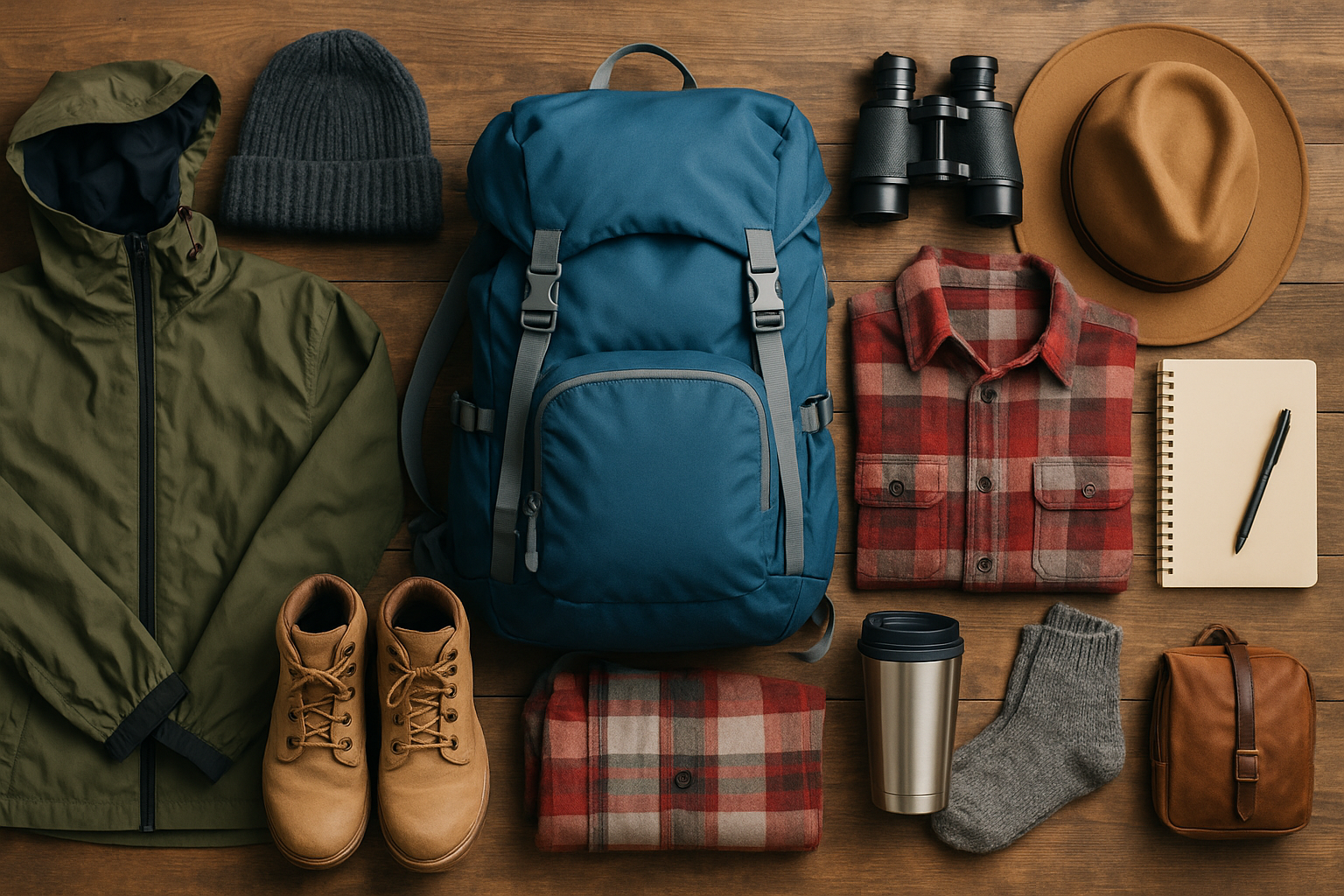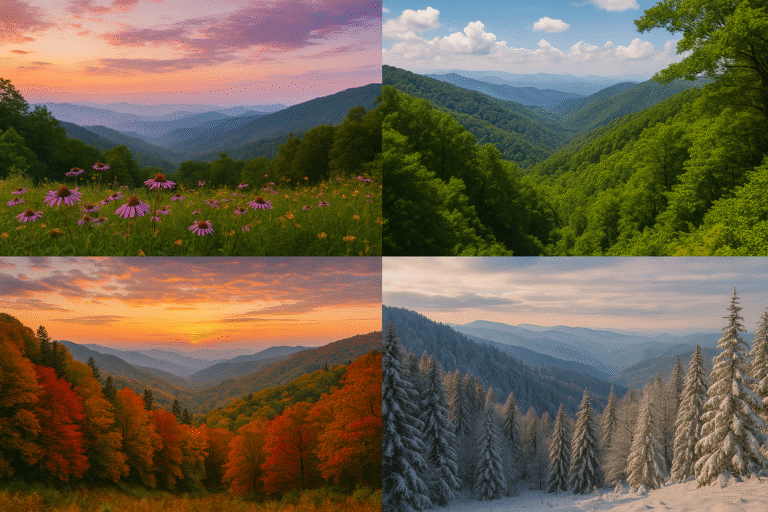
Whether you’re heading to the Smokies for a cozy winter cabin getaway, a spring wildflower hike, or a summer tubing adventure, what you pack can make or break your trip. Mountain weather is famously unpredictable, and each season brings its own packing priorities.
This all-season Smoky Mountains packing guide breaks down what to bring based on the time of year, type of activities, and local conditions. Let’s make sure you’re fully prepared—no matter when you visit.
Year-Round Essentials (No Matter the Season)
These are the items you’ll want to pack for any trip to the Smokies:
- Comfortable walking/hiking shoes
- Rain jacket or poncho
- Water bottle or hydration pack
- Sunscreen & lip balm with SPF
- Insect repellent
- Map (paper or offline digital)
- Daypack or backpack
- Binoculars (for wildlife viewing)
- Camera or smartphone with charger
- Reusable shopping bag
- First-aid kit with medications
Pro Tip: The Smokies are rugged. Even short walks can turn muddy or rocky—wear sturdy shoes!
Spring Packing List (March – May)
Weather: Mild with rain and cool nights. Temps range from 50°F–70°F.
- Waterproof hiking boots or shoes
- Lightweight long-sleeve shirts and pants (layering is key)
- Light sweater or fleece
- Rain gear (jacket and umbrella)
- Hat (for sun or light rain)
- Spring wildflower guide
- Hiking poles (trails may be slippery)
- Allergy medications (pollen can be high)
Optional: Lightweight gloves for early spring mornings, compact umbrella
Summer Packing List (June – August)
Weather: Warm and humid, with afternoon thunderstorms. Temps range from 70°F–90°F.
- Moisture-wicking shirts and shorts
- Sun hat or cap
- Sunglasses
- Swimsuit (for swimming holes or tubing)
- Water shoes or sandals with grip
- Cooling towel or neck gaiter
- Light jacket for higher elevations
- Electrolyte drink mix or tablets
Optional: Bug net hat for hikes, dry bag for river activities, water filtration straw for backcountry hikes
Don’t Forget: Sunscreen (even on cloudy days!)
Fall Packing List (September – November)
Weather: Cool and dry. Temps range from 50°F–70°F (with cold nights).
- Layered clothing: base layer, mid-layer, and outer shell
- Warm hat and gloves (especially in October/November)
- Fleece jacket or insulated hoodie
- Hiking boots with ankle support
- Reusable thermos or insulated water bottle
- Scarf or neck gaiter
Optional: Binoculars for fall foliage and wildlife, blanket for scenic overlook picnics
Pro Tip: Dress in layers—you may start a hike chilly and finish it sweating!
Winter Packing List (December – February)
Weather: Cold and variable. Temps range from 20°F–50°F, snow at higher elevations.
- Insulated, waterproof boots
- Thermal base layers (top and bottom)
- Warm gloves, hat, and scarf
- Heavy winter coat or puffer jacket
- Wool socks (bring extras)
- Microspikes or traction cleats (for icy trails)
- Blanket for car or overlook stops
- Hot drinks in a thermos
Optional: Sled or snowshoes if snow is deep, hand warmers
Don’t Forget: Many park roads close in winter—check NPS alerts before driving.
Bonus: Cabin Stay Essentials
Whether you’re staying in a luxury lodge or rustic cabin, consider packing:
- Groceries or meal prep supplies
- Coffee, tea, and condiments
- Firewood or fire starter (if fireplace or fire pit available)
- Slippers or cozy socks
- Books, games, or cards
- Flashlight or lantern (some cabins are remote)
Optional: Streaming device (Wi-Fi can be slow), your favorite blanket or pillow
Packing for Kids
- Refillable water bottle
- Extra outfits (mud happens!)
- Favorite snacks and toys
- Rain boots or all-terrain shoes
- Kid-sized backpack
- Trail scavenger hunt printout or coloring book
Safety & Navigation Add-Ons
- Printed trail maps (in case of no service)
- Whistle and mini flashlight
- Bear spray (especially in remote areas)
- Emergency contact card
- Pocketknife or multitool
Day Hike Checklist
- Water + snacks
- Map or trail guide
- Hat & sunglasses
- Sunscreen & bug spray
- Rain gear
- First-aid kit
- Camera or phone
- Trail permit (for backcountry trips)
- Lightweight jacket or layers
- Small trash bag (Leave No Trace!)
Final Thoughts
Packing for the Smokies is all about preparation and layers. Mountain weather can shift dramatically, and trail conditions vary by elevation and season. Whether you’re hiking, driving, camping, or just relaxing on a cabin porch, this guide helps ensure you’re ready for every twist and turn of your mountain adventure.

